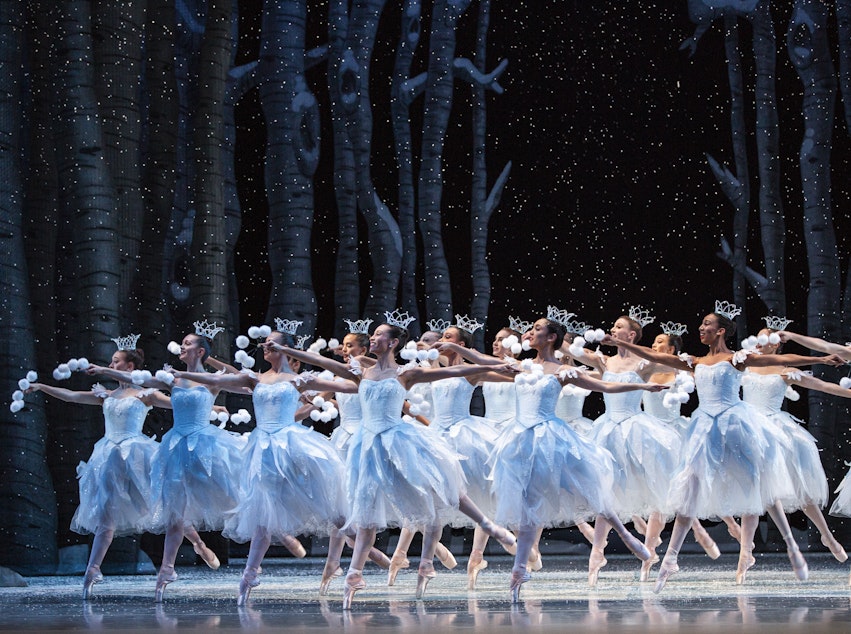Seattle arts looks to the holidays to hook new generation patrons

On a chilly November afternoon, more than a dozen children are giggling in Pacific Northwest Ballet’s biggest rehearsal room.
They’re cast members in the upcoming production of George Balanchine’s classic holiday ballet, “The Nutcracker,” and they are thrilled to be in the studio with PNB’s professional company members.
The Seattle-based ballet company has presented this annual holiday show for almost 40 years (although PNB replaced former artistic director Kent Stowell's "Nutcracker" with Balanchine’s version in 2015).
Read more: Nutcracker or Buttcracker? In Seattle, this holiday show comes in naughty and nice
Last year more than 80,000 people attended, bringing in more than $6 million in ticket sales.
“I can’t imagine the holiday season without 'Nutcracker,”' says Ellen Walker, PNB’s executive director.
Not only because it brings in about a fifth of the ballet company’s annual revenue, but also Walker calls the holiday confection a “gateway” to PNB’s other offerings.
“Seventy-five percent of our overall audience comes to us for the first time through 'Nutcracker,'” she says.

Sponsored
In an era when a bevy of entertainment options vie for people’s recreational time and dollars, classical arts organizations like PNB are on the lookout for ways to attract new, younger audiences.
That’s imperative if they want to survive. Several national studies of arts audiences show the average patron is over 40.
Arts groups also have to compete with the digital world.
“There’s so much to see on Netflix, Hulu and Prime,” says 27-year-old software designer Laura Valiente De Vega.
Valiente De Vega’s father introduced her to live theater when she was a child. She’s been attending performances on her own since she was 13. The soft-spoken Shoreline resident says the arts offer a different lens on world events.
“I often tell my friends who say, ‘Oh, art is boring,’ that art is an intersection of what’s happening,” Valiente De Vega says. “The news gets really old after a while.”
Sponsored
But Valiente De Vega’s embrace of live performance is the exception rather than the rule, according to ACT Theatre’s managing director Becky Witmer.
Witmer says most people in their 20s and 30s weren’t exposed as children to the arts through families or their public schools.

“I think we’re seeing a generation of people who had fewer field trips; they didn’t have music, or drama or dance,” says Witmer. “So they weren’t even thinking this is something I want to do.”
Even if they do want to sample a play at ACT or another professional theater company, a single ticket can set them back as much as $50.
Earlier this year, in an effort to make their product more accessible, Seattle’s Intiman Theatre decided to give away all tickets to its summer production for free. Development director Wesley Fruge says Intiman’s experiment was designed to attract people who wouldn’t normally attend a live performance.
Although patrons had to pay to see Intiman’s subsequent productions, Fruge says day-of walk up sales increased more than 20 percent.
“That is very significant,” he says, “because the majority of people who make these day-of entertainment decisions are under the age of 40.”
Although other area arts groups haven’t jumped on the free-ticket bandwagon, they do have a variety of discount packages. ACT Theatre offers a weekly pay-what-you-will performance on Sunday evenings. PNB has a regular $39 “beer and ballet” special.
Arts leaders hope those discounts will entice potential patrons to dip their toes into live performance. ACT’s Witmer says holiday shows, like their production of “A Christmas Carol,” are the perfect place to test the waters.
“I think it’s a timeless story for a reason,” says Witmer. “It’s about humanity, and we need to remind ourselves to take care of each other right now.”




